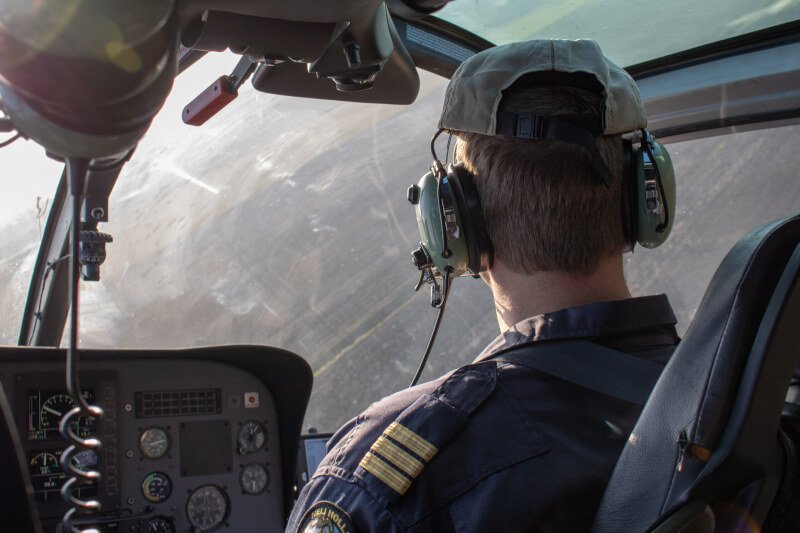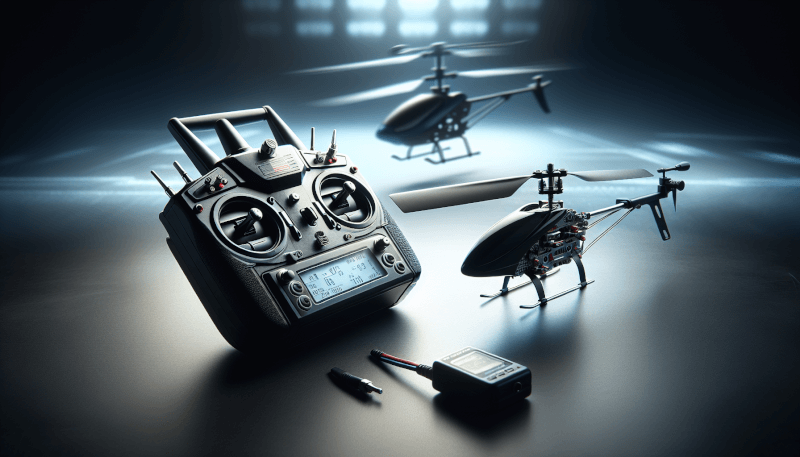Are you a radio control helicopter enthusiast who is looking to upgrade their equipment? If so, you’ve come to the right place! In this article, we will guide you through the process of choosing the perfect RC heli transmitter and receiver combo for your needs. Whether you’re a beginner trying to gain more control over your helicopter or an experienced pilot looking to take your skills to the next level, we’ve got you covered. So sit back, relax, and let’s explore the world of RC heli transmitters and receivers together!

Factors to Consider
When it comes to choosing the right RC heli transmitter and receiver combo, there are several factors that you need to consider. These factors will play a crucial role in determining the performance and functionality of your RC heli. Let’s take a closer look at each factor and understand why they are important.
Frequency Range
The frequency range of your RC heli transmitter and receiver combo is an important consideration. It refers to the range of frequencies that the transmitter and receiver can operate on. The most common frequency ranges for RC helicopters are 2.4GHz, 72MHz, and 50MHz.
- 2.4GHz: This frequency range is the most popular and widely used because it offers excellent signal quality, long-range capability, and minimal interference from other devices.
- 72MHz: This frequency range is less common nowadays as it is prone to interference from other devices. However, it can still be used in certain situations where there are no other devices operating on the same frequency.
- 50MHz: This frequency range is rarely used in RC helis due to limited availability and compatibility issues with modern equipment.
When choosing the frequency range for your RC heli transmitter and receiver combo, it is recommended to go with the 2.4GHz range for the best overall performance and reliability.
Number of Channels
The number of channels refers to the number of control functions that your RC heli transmitter can operate. Each channel corresponds to a specific control function such as throttle, pitch, cyclic, and tail. The more channels your transmitter has, the more control functions you can operate simultaneously.
- Beginner Level: For beginners, a transmitter with 4-6 channels is usually sufficient. This allows you to control the basic functions of your RC heli and learn the basics of flying.
- Intermediate Level: As you progress in your RC heli flying skills, you may require more control over your heli. Transmitters with 7-9 channels are ideal for intermediate level pilots, as they offer more control functions and advanced features.
- Advanced Level: For advanced pilots who require full control over their RC heli, transmitters with 10 or more channels are recommended. These transmitters offer a wide range of control functions and advanced programming options.
Consider your skill level and the complexity of the maneuvers you want to perform when choosing the number of channels for your RC heli transmitter.
Compatibility
Compatibility is another crucial factor to consider when choosing an RC heli transmitter and receiver combo. There are two aspects of compatibility to consider: brand compatibility and protocol compatibility.
- Brand Compatibility: It is important to ensure that the transmitter and receiver you choose are compatible with each other in terms of brand. Some brands may have proprietary protocols that are not compatible with other brands. Therefore, it is essential to choose a transmitter and receiver from the same brand to ensure seamless compatibility.
- Protocol Compatibility: The protocol refers to the communication system used between the transmitter and receiver. Ensure that the protocol used by your RC heli transmitter is compatible with the receiver you plan to use. Common protocols include FHSS, DSMX, and FASST.
Checking both brand compatibility and protocol compatibility will ensure that your RC heli transmitter and receiver combo work together harmoniously.
Price
Price is an important consideration when it comes to choosing an RC heli transmitter and receiver combo. It is essential to find a balance between your budget and the features you require from your equipment. RC heli transmitters and receivers are available in different price ranges, including budget-friendly options, mid-range options, and high-end options.
- Budget-Friendly Options: These options are ideal for beginners or those on a tight budget. They offer basic functionality and may lack some advanced features. However, they still provide reliable control over your RC heli.
- Mid-Range Options: Mid-range options strike a good balance between price and features. They offer more advanced functionality, better build quality, and additional features like telemetry and programmability.
- High-End Options: High-end options are designed for professional pilots or those who want the best performance and features available. They are often packed with advanced features, superior build quality, and exceptional signal reliability.
Consider your budget and the features you require to find a transmitter and receiver combo that fits your needs.
Build Quality
Build quality plays a crucial role in the reliability and durability of your RC heli transmitter and receiver combo. When choosing a transmitter and receiver, it is important to consider the materials used, ergonomics, and durability.
- Materials Used: Look for transmitters and receivers that are made from high-quality materials that can withstand the rigors of RC heli flying. Lightweight yet durable materials like carbon fiber and aluminum are commonly used to ensure strength without compromising weight.
- Ergonomics: Consider the ergonomics of the transmitter. It should have a comfortable grip and easy-to-reach controls. Ergonomics play a vital role in preventing fatigue during long flying sessions.
- Durability: Your RC heli transmitter and receiver combo should be able to withstand crashes, vibrations, and other harsh conditions. Look for units that are shock-resistant and have a reputation for durability.
Choosing a transmitter and receiver combo with good build quality ensures that your equipment will last longer and perform reliably.
Transmitter Features
Now that we have explored the important factors to consider when choosing an RC heli transmitter and receiver combo, let’s dive into the features that you should look for in a transmitter.
LCD Display
A transmitter with an LCD display provides important information such as battery voltage, signal strength, channel assignments, and more. The display should be clear and easy to read, even in bright sunlight. An LCD display allows you to monitor your heli’s status and make necessary adjustments on the go.
Ergonomics
Comfortable ergonomics are essential for a transmitter, especially during long flying sessions. Look for a transmitter that fits well in your hands and has well-placed controls. Consider the weight and balance of the transmitter to ensure that it is comfortable to hold and operate.
Telemetry
Telemetry is a valuable feature that allows you to receive real-time data from your RC heli, such as battery voltage, motor temperature, altitude, and more. This data can help you monitor the health and performance of your heli and make informed decisions during flight.
Programmability
Advanced transmitters often offer programmability, allowing you to customize and fine-tune various settings to suit your flying style and preferences. These settings may include expo, dual rates, throttle curves, and more. Programmability gives you greater control over your RC heli’s performance and allows you to tailor it to your liking.

Receiver Features
While transmitters are essential, the receiver also plays a crucial role in the performance of your RC heli. Let’s explore the key features to consider when choosing a receiver.
Number of Channels
The number of channels on your receiver should match or exceed the number of channels on your transmitter. This ensures that all control functions can be properly assigned and utilized.
Fail-Safe Functionality
Fail-safe functionality is a crucial safety feature that ensures your RC heli’s controls default to predetermined positions in the event of signal loss or interference. This can prevent your heli from going out of control and potentially causing damage or injury.
Range
The range of your receiver determines how far you can fly your RC heli from the transmitter without losing signal. Look for a receiver with a range that suits your flying style and environment. Keep in mind that factors like obstacles and interference can affect the actual range.
Signal Quality
A good receiver should provide a strong and reliable signal to your RC heli. Look for receivers with good signal quality and minimal interference. Features like diversity antennas can help improve signal quality and reduce the chances of signal loss.

Reviews
Before making a final decision on your RC heli transmitter and receiver combo, it is always a good idea to read both customer and expert reviews.
Customer Reviews
Customer reviews provide valuable insights into the performance, reliability, and user experience of a particular transmitter and receiver combo. Look for reviews from users who have a similar skill level and flying style as yours. Pay attention to both positive and negative reviews to get a balanced understanding of the product.
Expert Reviews
Expert reviews can provide in-depth analysis and unbiased opinions on various transmitters and receivers. Look for reviews from reputable sources or RC heli experts who have extensive experience and knowledge in the field. Expert reviews can help you make an informed decision based on technical specifications, performance, and overall value.

Conclusion
Choosing the right RC heli transmitter and receiver combo is crucial for a successful and enjoyable flying experience. Consider the frequency range, number of channels, compatibility, price, and build quality when making your decision. Look for transmitters with features like LCD displays, comfortable ergonomics, telemetry, and programmability. For receivers, consider the number of channels, fail-safe functionality, range, and signal quality. Lastly, read customer and expert reviews to gather insights before making your final choice. With careful consideration and thorough research, you can find the perfect RC heli transmitter and receiver combo to suit your needs and take your flying to new heights.



